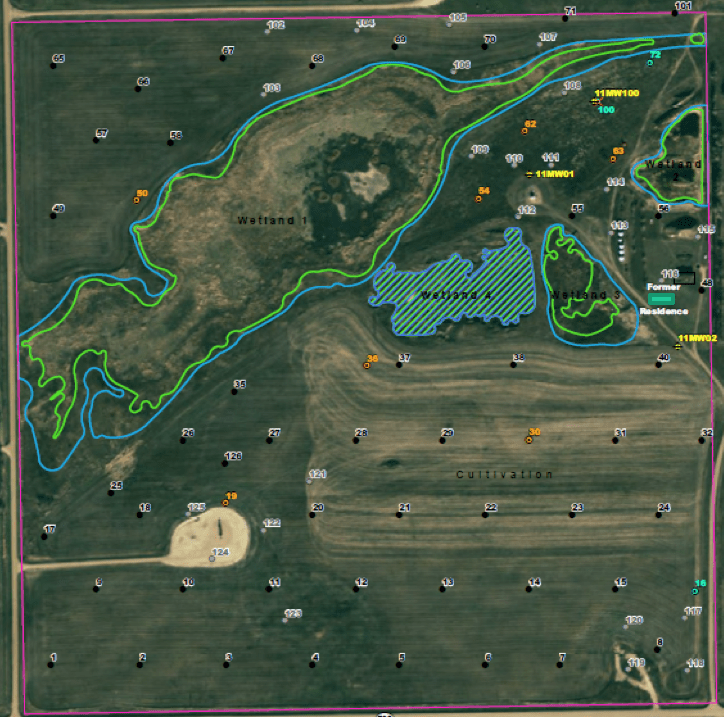Sampling can easily run up the costs of an investigation. As expert chemists, it's our responsibility to balance cost with collecting the proper number of samples for our clients.
With appropriate planning, we are able to collect the optimal samples for the best data at a lower cost. Here's how we do it.
How Statistical Sampling Optimizes Sampling Plans
Some sampling decisions are easy to make. If we see stained soil, for example, we know to collect it.
But what about the cases when there's no visual cue? How do we know what and how many samples to collect? That's where statistical sampling comes in.
Statistical sampling uses statistics to determine where and how many samples to collect. The goal is to provide you with enough data for your hypothesis with a predetermined level of certainty.
Let's use one of our recent projects as an example...
Determining if a Site is Clean with 95% Confidence
Our client needed to determine if a site was clean from contamination, i.e., demonstrate that contamination was no longer present after surface contamination was removed. And they wanted to be reasonable with how frequently to sample.
We were dealing with a very large area. We could have sampled randomly or with best judgement. Instead, we determined just how many samples we needed to be 95% confident that the site was below the regulatory guidelines.
We geospatially mapped out the area of the excavation. We then used a program called Visual Sampling Plan (VSP) developed by Pacific Northwest National Laboratory. The program provided GPS locations for the samples based on a grid pattern.
Ultimately, we supplied our client and regulators with a well planned out approach to determine if the site was clean. By using proper planning and statistical sampling, our client was able to pay for reasonable sampling of the excavation area that was both defensible and based on sound science (statistics in this case).
It's Not Too Late for Statistical Sampling
It's best to use statistical sampling early vs. later in an investigation. The better your sampling plan, the better your data may be.
However, clients often come to us after the fact. They're looking for assurances that they sampled the right amount. At this point, VSP can still be used to determine if you have enough to prove your case, or if you need more samples.
But remember that it's far superior to plan ahead. Sometimes it's harder or not possible to collect samples later on. So develop your sampling approach early, and considering using VSP whenever possible.
Traveling to San Diego to Expand our Knowledge
Statistical sampling is important for developing the best sampling approach. That's why several of us at Chemistry Matters are traveling to San Diego this week. We'll be taking a full course on the use of VSP to learn even more about the program.
This way, we can further help our clients deal with their future sampling issues with confidence and sound science. And missing a week of winter for time in San Diego is not a bad perk either!
Contact Chemistry Matters for guidance on your sampling approach.




